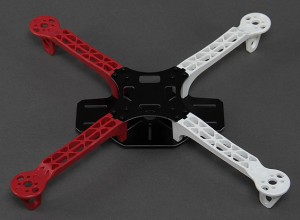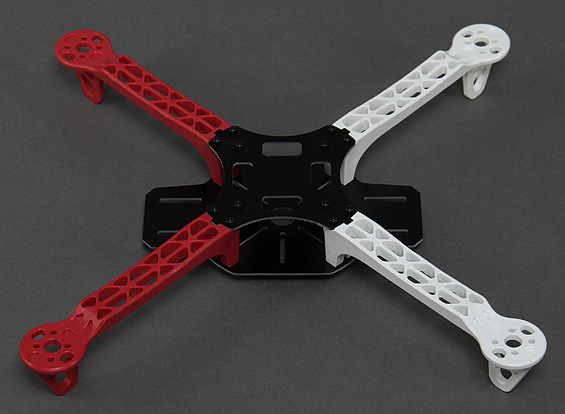What is a Quadcopter?
[NOTE: This tutorial has been written to provide a brief introduction towards building a copter. For details, please refer other valuable sites like MyFirstDrone, Instructables & QuadGarage. ]
In this post, we will walk you through on the components required for building a quadcopter.
1. What is a quadcopter?
A quadcopter, also called a quadrotor helicopter or quadrotor, is a multirotor helicopter that is lifted and propelled by four rotors. Their lift is generated by a set of rotors which are vertically oriented propellers. [1]
2. Quadcopter Frame
A frame is like a skeleton of our body. It holds all the parts together and provides rigidness to the aircraft. Stiffer frames confer better flight characteristics, since less warping and bending can occur. Frames need to be both strong and stiff, whilst being light enough to hop around in the sky with ease. One of the most common materials for multi-rotor frames is carbon fiber.

PC: Hobbyking.com
3. Motors & Propellers
Motors are like the limbs of our body, that do the heavy lifting. Their main function is to propel the aircraft in the air, maintain its position and maneuver it around. Motors which are widely used are of “brushless” type, that is, they have very less friction.
To choose a motor we first need to how much weight you are planning to take, and then to work out the thrust required to lift the quadcopter. A general rule is that you should be able to provide twice as much thrust than the weight of the quad. [2]
A rule of thumb is Required Thrust per motor = ( Weight x 2 ) / 4
A quadcopter uses two clockwise(CW) and two counter-clockwise(CCW) propellers. Propellers are classified by length and pitch. Generally, increased propeller pitch and length will draw more current. In a nutshell, higher pitch means slower rotation, but will increase your vehicle speed which also use more power. [2]

Propeller Examples [PC: MyFirstDrone
![Brushless Motor [PC: Toms Hardward]](https://blogs.cornell.edu/cornellcup2015adra/files/2015/03/motor-2bvo8dr-150x150.jpg)
Brushless Motor [PC: Toms Hardward]
4. Flight Controllers
These are the brains behind the quadcopter. Its function is to direct the RPM of each motor in response to input. It constantly measures and analyses sensory data and provides corresponding adjustments to maintain flight path or position. A command from the pilot for the multi-rotor to move forward is fed into the flight controller, which determines how to manipulate the motors accordingly.
The majority of flight controllers also employ sensors to supplement their calculations. These range from simple gyroscopes for orientation to barometers for automatically holding altitudes. GPS can also be used for auto-pilot or fail-safe purposes. [3]
![Pixhawk FC [PC: Pixhawk.org]](https://blogs.cornell.edu/cornellcup2015adra/files/2015/03/pixhawk-2cr33bu-150x150.jpg)
Pixhawk FC [PC: Pixhawk.org]
5. Speed Controllers & Batteries
Electronic speed controllers (ESCs) are used to translate signal to electrical supply. On a multi-rotor, every motor gets its own ESC, each of which connects to the flight controller. After computing the inputs, the controller directs each ESC to adjust its speed in order for the craft to perform them.
For batteries, the industry standard are lithium-ion polymer (LiPo) batteries, which are relatively lightweight, compact, and offering high discharge rates, LiPos are well-suited for multi-rotors.[3]
Our Drone:
As our project is based on drones, a post without a sample/teaser of our drone is “pointless”. Thanks to David, we have our first drone ready and flight tested. It uses a carbon-fibre frame, a Pixhawk FC, weighs around 3 pounds and has a flight time of about 35-45 minutes.

ADRA Drone 1


